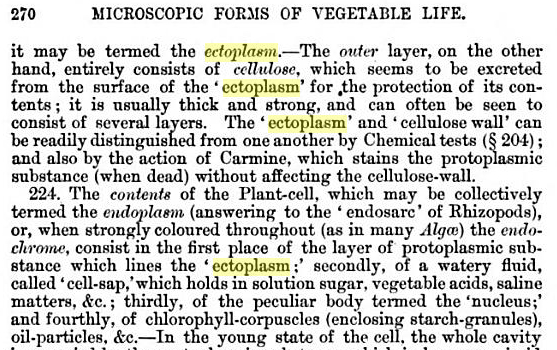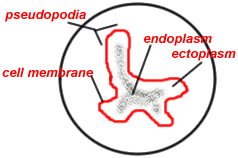Ectoplasm (cell biology)
The ectoplasm, and outdoor plasma or Ektosark, is the outer layer of the cytoplasm of many unicellular organisms. The inner part of the cytoplasm, however, is referred to as endoplasm, both plasma species are not fundamentally different, but to intra- protoplasmic organelles differ from each other only in their consistency and different distribution.
Design and function
The ectoplasm contains no organelles in contrast to the endoplasm. It appears homogeneous translucent in microscope and has a gel-like consistency with a higher viscosity ( plasma gel ) as the thin liquid sol endoplasm ( Plasmasol ). It is normally rich in fibrillar proteins, especially actins that can be networked via auxiliary proteins such as fimbrin, a- actinin and filamin to form a rigid gel. This stiffening is controlled by the concentration of calcium (Ca2 ), which disintegrate the structures at higher Ca2 concentration and the plasma goes into a sol state.
Especially in the formation of pseudopodia, there is a mixing of the two components ( gel - sol transitions ); the ectoplasm liquefies and flows toward the pseudopodium, while the endoplasm flows into the pseudopodium and is on the edge of viscous. In the locomotion without switch amoeba there is a contraction in the ectoplasm, which is mediated by actin, whereby the liquid endoplasm developed a flow and flows into the pseudopodium.










